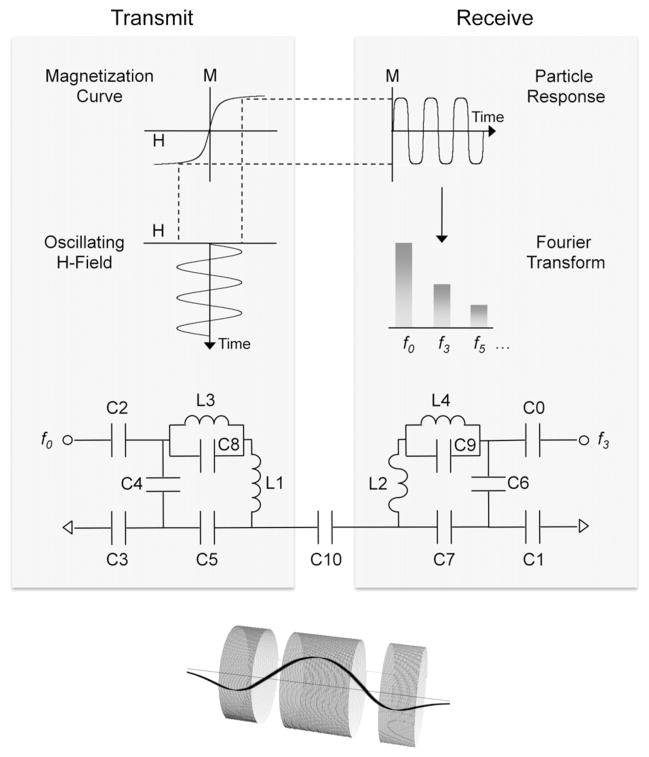Fig. 1. Sensor operation and design.
Upper left: nanoparticle magnetization (M) varies nonlinearly when a magnetizing force field (H) is applied. Middle left: During sensor operation, an oscillating H-field drives particle magnetization at a fixed frequency (f0). Right upper and middle: The time-varying particle response (M) then not only contains f0 but also higher-order (odd) harmonics (f3, f5, etc …) due to nonlinear H-dependence. Transceiver circuit: H-field modulation is produced using a wire-wound solenoid (L1) and commercial capacitors that— (1) tune its resonant circuit to f0 (C4–C5), and (2) match impedance to 50 Ω (C2–C3). Third order harmonics in particle magnetization (M) are then detected using a smaller receiver coil (L2) that resides inside the transmit coil (L1), is tuned (C6–C7) to f3, and is also matched (C0–C1). Electrical isolation between transmit and receive channels is enhanced by capacitive decoupling (C10) and through LC-traps at f3 (L3C8) and f0 (L4C9). Coil inset: counter windings on opposite ends of the receiver coil (L2) further improve isolation but also introduce axial variations in the sensor’s sensitivity profile (bold curve).

